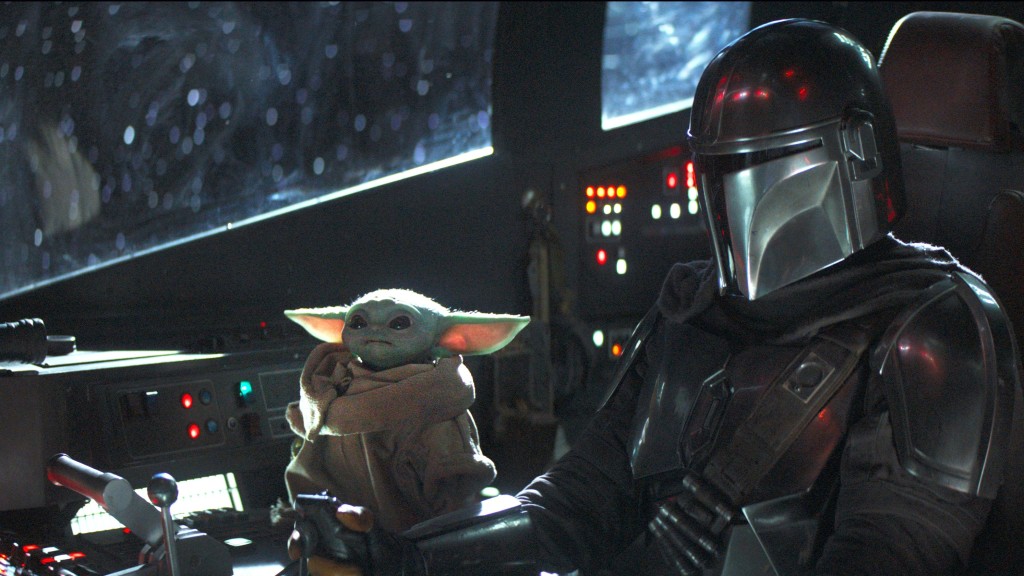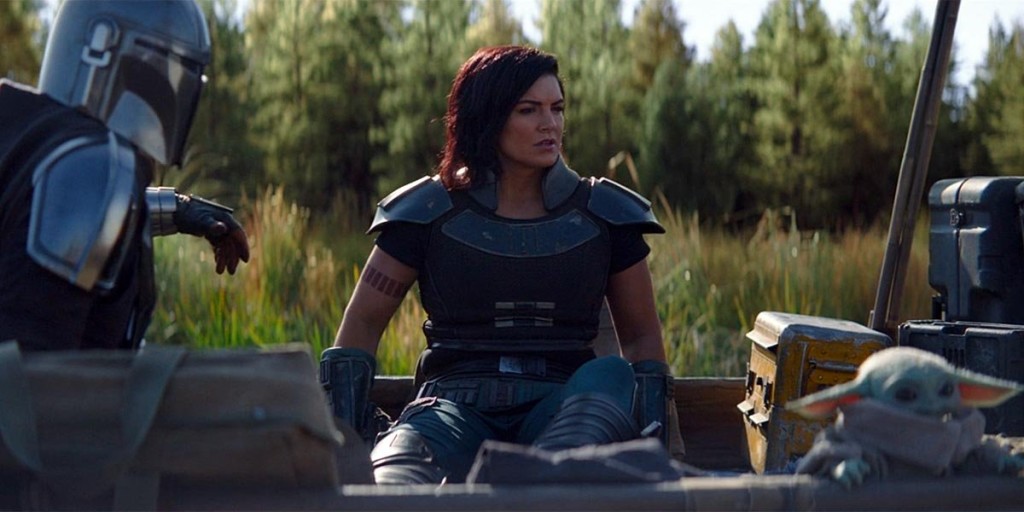Welcome to The Mandalorian Teleplay Chronicles. I will be reviewing every episode of The Mandalorian’s first season with an eye towards helping writers learn TV writing. Whether the show is a breakout hit or a Jar Jar Binks level bust, we’re going to be focusing on how to become better TV writers. Here’s a link to my review of the first episode here, a link to the second episode here, and here’s a link to episode 3.
Genre: Sci-Fi
Premise: The Mandalorian takes Baby Yoda off to a remote planet to hide from pursuing bounty hunters, but runs into a problem when members of a nearby clan ask for his help.
About: Jon Favreau wrote this fourth episode and Bryce Dallas Howard, who starred in Jurassic World and is the daughter of “Solo” director, Ron Howard, directed the episode. Dallas Howard has one directing credit to her name – a short film.
Writer: Jon Favreau
Details: About 38 minutes
It’s days like these that I wish I didn’t know as much about Star Wars as I did. It definitely affects my judgment. I knew, for example, that Jon Favreau wrote three episodes when he pitched the show to Disney. That means Chapter 4 would be the first episode of the show Favreau wrote *after* his original 3 episode self-contained story. So I was expecting something clunky, or, at least, not as purposeful, and that’s exactly what I got.
Something else I knew was that Bryce Dallas Howard would be directing this episode. I’ve been annoyed about this news ever since it was announced. You’ve got the first ever Star Wars show. You’ve got eight episodes. You want to make the show as amazing as it can possibly be. Your first job is choosing directors for each episode. In ANY room with ANY group of people, is there ANY scenario under which ANY person says, “You know who we need directing one of these? Bryce Dallas Howard.”
Of course not. It would never ever happen. There is a list of, probably, 2500 directors in the world who have more experience and deserve more of a shot and who are more qualified to direct a Star Wars episode than Bryce Dallas Howard. Which means that the only reason Bryce Dallas Howard is directing an episode is because someone got her the job. And you don’t have to look far to figure out how that happened. Her dad, Ron Howard, probably said that one of the conditions for him to come in and save “Solo” was that his daughter get to direct an episode of The Mandalorian. And that’s exactly why we get the worst episode of The Mandalorian yet.
Now I’m not going to lay all the blame on Howard. Favreau wrote this episode and he didn’t do her any favors. But when your episode looks like something out of a bad Syfy series, that responsibility usually falls on the shoulders of the direction. Especially when you’ve been given more money than 99% of the shows out there.
This silly episode starts off with the Mandalorian flying Baby Yoda to a remote planet to, I think, hang out for a few weeks and let the heat die off them. Immediately, they go to some Star Warsian Starbucks, and that’s where the Mandalorian sees a woman drinking a puppychino. For some reason, he believes she’s a threat to him, and therefore follows her out back where they get into a fight.
The fight ends in a draw which means that now they’re best friends. Um, okay. Soon after, a couple of locals approach the Mandalorian and ask for his protection. Their nearby clan is being bullied by some neighbors. Mandalorian sees this as an opportunity to get Baby Yoda further away from danger so he takes the deal. And New Chick comes with cause why not?
Once at the village, a hot widowed woman flirts with Mandalorian, telling him he needs to take off his helmet more. Then Mandalorian and New Chick teach the locals how to fight and shoot, a task that takes all of 40 seconds. They then wait for the bad guys to approach. They come that night with an Imperial AT-ST walker and the fight is on. The good guys win but Star Wars fans lose. The end.
In television, the fourth episode is really where you start to see if the show is working. The novelty has worn off. We’re a month in. Are we getting consistent quality entertainment or aren’t we?
From a writing perspective, your approach to episode 4 shouldn’t be that different from your approach to episode 3. You’re trying to expand the mythology to imply a bigger world, a bigger threat. Why are you doing this? Because we want viewers to start making a mental long-term commitment. It’s like dating. You want the other person to start seeing you in their future, not just the next dinner date or next late night booty call.
The Mandalorian didn’t go there though. There was one moment where it had the opportunity to but it didn’t follow through. The Mandalorian makes a comment about, “Why would an AT-ST be way out here in the middle of nowhere?” That’s a good question. Why? Is some fallen Empire villain putting together a nefarious plan? Nope. Turns out it was just some random happenstance thing! Oh well.
What the episode DID do was create a contained story for the episode. This I endorse. Too many TV shows use their episodes as formless blocks of time to move individual character storylines further along. If you’ve ever watched an episode of your favorite show and been disappointed that the episode felt empty and unfocused, this is often the reason.
Remember the very simple formula for creating a storyline for a TV episode. Present a PROBLEM and then have your hero try and SOLVE THE PROBLEM. Here we get this clan’s problem that a nearby clan keeps attacking them. So the whole episode is about teaching the clan to defend themselves and, at the end, fighting off the threat once they arrive.
In theory, the bones for a good episode are there. But there were too many problems.
The most obvious one was that there wasn’t enough time to make an episode like this work effectively. Who is this clan??? We’ve known them for two seconds. Why should we care whether they fight off the bad guys or not? You need time to build up an entire group of people, to build up the characters within that group so that we care for them. When you don’t effectively develop characters, they become cliche. They have no choice other than to be cliche because we don’t know enough about them to differentiate them from other characters we’ve seen. The same principle goes for the group. Don’t know what makes them unique = cliche.
But the real problem with this episode was all of the “Of Course” moments. “Of Course” moments are when something happens in a show/movie because “of course” it does. “Of Course” moments are things we’ve seen in a million other shows and movies, things that have become so ubiquitous that the use of even a few of them can destroy any chance of creating originality. The things we remember in a story are never the things we’ve seen before. They’re the things that are different.
Of course when the Mandalorian sees New Chick they get in a fight with each other that ends in a draw. Of course they both teach the clan how to fight in a cheesy montage. Of course someone is about to shoot Baby Yoda but at the very last second we hear a blast then see that New Chick has shot the killer first. A huge reason why this episode was so lame were all the Of Course moments. Nothing you write is ever going to stand out if you’re drenching your script in Of Course moments.
Another problem with this episode is that it was the first episode that moved from an ACTIVE storyline to a PASSIVE storyline. Your characters weren’t going out there and trying to achieve something. They were waiting for the fight to come to them. WAITING is often a storytelling death sentence. It can work. But the skillset required to make it work is more extensive than simply having your character go after something. The pairing of a “waiting around” narrative combined with a first time director doomed this episode before it was even shot.
Finally, I want to talk about THREADING in television writing. Threading is the act of weaving setups into episodes so that later episodes don’t feel too self-contained. With television, you want the fabric of every episode to connect to the fabric of every other episode. You do this by threading in moments or information in previous episodes.
The show “Evil” has been dropping nuggets throughout the first six episodes that our heroine’s husband is a tour guide on Everest. So when he finally shows up in Episode 7 and they dedicate a whole storyline to him, we’re not asking, “Wait, who is this guy and where the heck did he come from?” The show has been threading in little moments throughout its running time to prepare us for his arrival.
The Mandalorian could’ve threaded in a number of things that would’ve made this episode more connected, starting with the planet. For example, maybe the Nick Nolte alien used to live on this planet and told him about it. As it stands, he chooses the planet because his Navi-computer indicates it’s habitable. It feels random, which subcommunicates a lack of importance to the action. Again, a big reason why you felt nothing for this clan was because they were so random. Had they been more connected to the story, that could’ve changed.
Sticking with my “Playoff Series” analogy, The Mandalorian has now won two games and lost two. My biggest concern is that we haven’t provided the series with an overall goal. If anything, you’re setting up a reactive storyline (keep running away with Baby Yoda) which doesn’t work as well as an active goal (“Lost” – Get off the island). I’ve going to give Favreau the benefit of the doubt because, well, “Baby Yoda.” But this series isn’t on strong enough ground to be giving inexperienced directors jobs based on nepotism. This is freaking Star Wars. Let’s bring in some All-Stars and give the viewers the experience they deserve.
[ ] What the hell did I just watch?
[x] wasn’t for me
[ ] worth the stream
[ ] impressive
[ ] genius
What I learned: Use “tell by showing” moments to improve your dialogue. In this episode, the clan’s widow character asks the Mandalorian when was the last time he took off his helmet in front of others. When a character asks another character a question, one of the WORST things you can do is have the other character give a straight-forward literal answer. “Twelve years,” would’ve been a boring answer, for example. A trick is to look for visual cues in the environment to give the answer more pop. There are a group of kids playing nearby while they have their conversation. The Mandalorian says to her, “I wasn’t much older than them.” Boom. A WAAAAAY better answer. You can’t do this for EVERY response, obviously, but you should be using it every once in a while.



